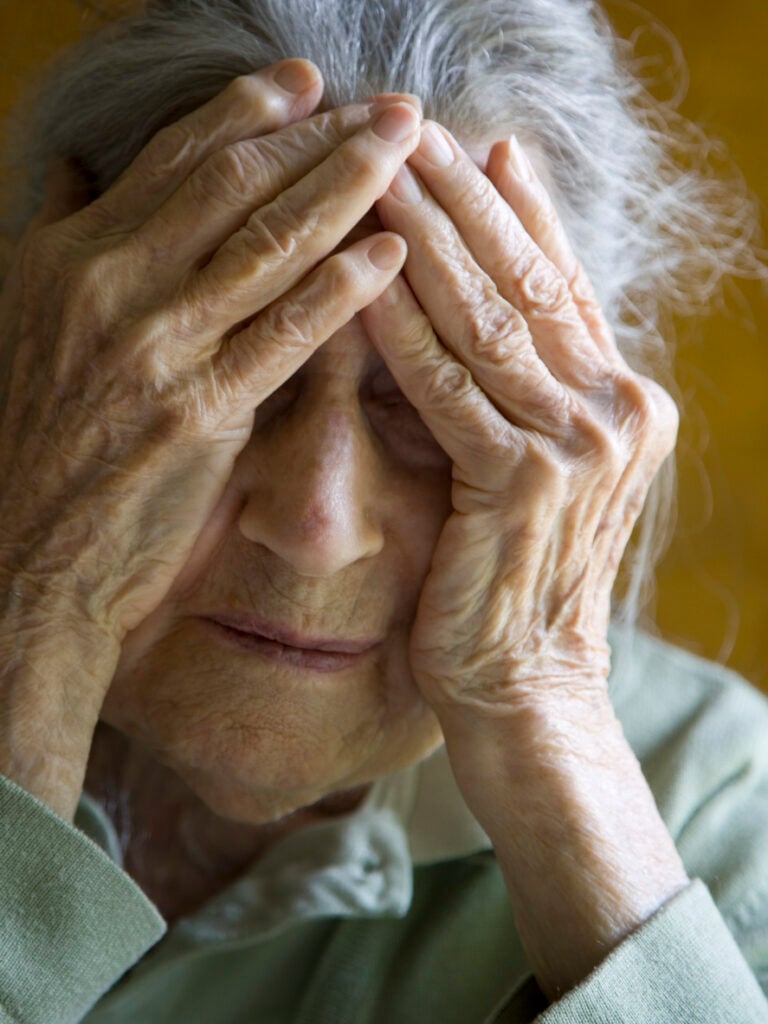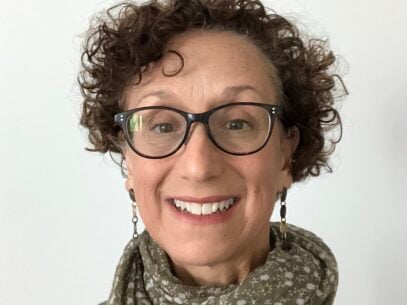November 2023
By Suzanne Howard, SCIE Practice Development Consultant
Recent disturbing headlines can only reinforce the worries many of us have about entering a care home but sadly such abuse can happen anywhere, including in a person’s own home. Many people do live safe and happy lives in care homes but when abuse does occasionally happen, it’s important that care providers learn from these tragedies to protect their residents.
In the last 2 years SCIE has overseen a number of safeguarding adults reviews (SARs) concerning sexual abuse in care homes perpetrated by other residents, staff, or others present in the home. SCIE has also carried out research into issues surrounding sexual abuse in adult social care settings. We hope that by bringing together some of the findings from this work we will help providers, and commissioners of care to take the right action at the right time to minimise the risk of sexual abuse.
We highlight below some of the key areas where providers and statutory agencies could take action to improve sexual safety:

A striking feature of this case is that Mr X’s history of sexual offences, for which he had not been convicted, were not known to the home or the safeguarding team until Mr X had committed his third and most serious assault on a resident at the home.
1. Risk assessment and information sharing
Risk factors for sexual abuse within the older population include being a woman, increasing age and having limited mental capacity. For people with learning disabilities women are again at higher risk, as are those with a more severe cognitive impairment and those living in services as opposed to living with a family. Across both groups perpetrators of sexual incidents are considerably more likely to be men, and more likely to be another person receiving a service.
The reviews found gaps in the initial assessment at the point of admission to a care home. Initial assessments frequently focused only on needs and not risks, which meant that staff had limited knowledge of the risks someone might pose to others.
This was especially true when the new resident was self-funding their placement with no input from social services. Social workers tend to carry out more robust assessments and often have more detailed history surrounding the person.
Even when social services were involved and risks were known, if the person was moving from one local authority area to another there was often no system for passing on crucial information.
Key information held by families as well as statutory agencies and outgoing care providers wasn’t shared in many of the cases looked at, making it difficult for new providers to make informed decisions about the level of risk and how to manage it. Instead various agencies and individuals had pieces of information that if brought together might have highlighted patterns of escalating behaviour that needed to be addressed urgently.
Even when risk was identified SARs found there was often no local multi-agency forum to consider those risks, and what action could be taken to reduce them.
When an incident had occurred, local authority safeguarding teams usually relied exclusively on the care provider to take full responsibility and come up with the answers. Not all care providers are equipped to do this in high-risk situations, and most will need help from specialist health services to provide wrap-around support and robust risk management strategies.
Safeguarding teams also tended to focus largely on the victim when making enquiries not the perpetrator, possibly leading to an incomplete picture and an unbalanced response to risk management.
Failing to share information, to collaborate with other providers and to properly assess makes it difficult to manage risk across a whole care setting population.
The Care Quality Commission (CQC, 2020) identified the need for risk assessment that takes account of the needs of those already living in a residential setting when considering new residents.
There is a common assumption that having a broad cognitive impairment equates to ‘not knowing what they’re doing’ rendering adverse behaviour unintentional and harmless. In consequence, risk is downplayed, and protections not put in place.
2. Language and misconceptions
An overwhelming finding was the use of inappropriate language to describe sexual assaults, particularly in relation to older people. It was common for assaults to be described as ‘disinhibited behaviour’ or ‘sexually inappropriate’, often attributed to dementia. Researchers found staff often had difficulty accepting that sexual assaults could happen at all, believing incidents must be rare, and often disbelieving victims when it did arise, particularly those with a diagnosis of dementia. Some researchers found that the emotional responses of victims following an assault could in fact mirror symptoms of cognitive impairment.
Misconceptions and the use of inappropriate language minimises the seriousness of the assault and often leads to inadequate responses that leave harmful behaviour unchecked. Non-consensual sexual activity is a serious sexual assault, it is a crime, and it should be recorded and responded to as such by all providers and agencies.
SCIE’s engagement with safeguarding adults boards (SABs) and police forces has also identified two wider points about the involvement of the police. The first is a general reluctance to involve the police. The second, a reluctance to pursue a prosecution because of challenges around gaining evidence, or the vulnerability of the perpetrator (as was the case in some of the SARs we looked at).
3. Policies, guidance, and staff training
Another common theme was the lack of sexual safety policies, processes, and guidance for staff, not only to help them recognise serious sexual assault but to prevent it. In the cases reviewed there were often predictors of dangerous behaviour that if know about or responded to earlier might have prevented subsequent harm. In one case sexual assaults perpetrated against care staff were dismissed when they should have been seen as significant, and a possible precursor for assaults against victims unable to protect themselves. In another, clearly delusional beliefs and fixations displayed by the perpetrator toward the victim were not taken seriously. In a third case the absence of a shared understanding of the significance of historical sexual incidents and a proper process for careful handover at the point of transition, left young people at risk.
Most commentators concluded there would be benefit in the introduction of suitable sexual safety policies, guidance, and quality standards to promote best practice, instil confidence in staff, and provide a framework for staff training.
Any guidance should be linked to the Mental Capacity Act 2005 to help staff understand:
- That in the absence of capacity to decide about taking part in sexual activity, the activity is non-consensual and is an assault
- Even when a person is believed to have capacity providers and agencies cannot rely solely on the person themselves to manage their own potentially harmful behaviour.
Training for staff not only needs to equip them to recognise sexual abuse but also to see sexual safety in its broadest sense, including environmental/cultural sources of vulnerability (e.g. the impact of having a care population with a wide range of needs, the layout of a building and staffs views on relationships), as well as issues such as self-empowerment. Training needs to be supported by the provision of appropriate assessment and risk assessment tools alongside detailed guidance.
This might be an area for local SABs and/or commissioning teams to get involved with, as having a shared and consistent local approach will help to avoid some of the challenges around information sharing, multi-agency responses, and different interpretations of risk.
4. Staffing
The final key theme to emerge was the significance of low staffing levels and high staff turnover. Good risk assessment and risk management requires close observation and consistent practice if sexual abuse is to be prevented. Staff require training, guidance and time and space to practice and reflect. Staff shortages leave gaps and high staff turnover dilutes skills and knowledge. Even in the statutory
sector reviewers found that pressures of work fostered a culture of ‘assess and forget’ rather than ongoing enquiry when risks were known.
Although perpetrators are much more likely to be other users of services some abusers are paid employees or visiting workers, and the review highlighted the risks associated with the loss of legacy data concerning previous allegations against members of staff due to systems changes. It also identified significant risks linked to the employment of family members working together in the same service, creating the potential for collusion with abusers and the dismissal of allegations.
Finally, the findings questioned the effectiveness of the processes followed by providers and safeguarding teams when the Crown Prosecution Service (CPS) decides not to charge a person (be it a member of staff or another user of the service), when they believe there is insufficient evidence to convict. One SAR reviewed involved a care assistant ultimately convicted of sexually assaulting 3 women with learning disabilities, who had been the subject of similar allegations twice before but reinstated following the CPS decision with no apparent follow-up safeguarding action.
Employers and safeguarding teams work to a different threshold than the police when an allegation is made, one where the likelihood of an incident having occurred is assessed ‘on the balance of probability’. In the absence of a multi-agency assessment of this probability the right actions may not be taken, and the risk of harm will remain.
Conclusion
Although we will never be able to eliminate the risk of sexual abuse entirely, SCIE’s research and review of a small sample of relevant SARs showed numerous missed opportunities to minimise it. It also showed common systems failures that leave people with care and support needs and staff unsupported and exposed.
The themes identified resonate with broader issues around effective safeguarding practice beyond sexual abuse. By ensuring staff are supported through up-to-date training, and policies and guidance that are regularly reviewed, care providers can improve the quality of care that residents receive and help to reduce the risk residents face from sexual or other forms of harm within a care setting.



